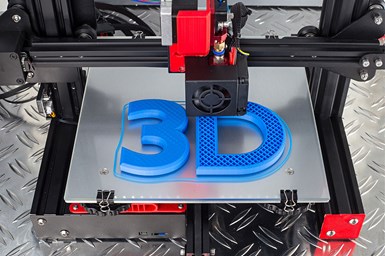America Makes Announces Winners of Rapid Innovation Call
Selected teams will receive funding from the Air Force Research Laboratory to help fill critical gaps in additive manufacturing technology.

The RIC projects are expected to be completed in May 2022 with project data made available to America Makes members.
America Makes has selected the winners of its Rapid Innovation Call (RIC) for projects worth $500K in total funding from the Air Force Research Laboratory (AFRL), Materials and Manufacturing Directorate, Manufacturing and Industrial Base Technology Division, to further advance the maturation of additive manufacturing (AM) technologies.
The topics for the RIC were announced in August during America Makes’ Technical Review and Exchange, and represent a concerted effort by the institute and its members to strategically prioritize investment in technical topics that will best help shape the industry’s direction.
“The America Makes membership community is truly working together to drive the direction we take to mature and advance AM technologies,” says Dr. Brandon Ribic, America Makes technology director. “We are excited to see our membership come forth with projects that will produce outcomes with real impact addressing critical areas of need, helping to further advance additive technology.”
The projects are expected to be completed in May 2022 with project data made available to America Makes members.
RIC Topics and Award Winners
Understanding Build Interruptions via AM Monitoring Methods
Ohio State University won this category with its project that entails quantifying the effects of build interruptions through in-process monitoring and mechanical testing.
AM Part Families for Product Qualification & Certification (Q&C)
ASTM’s winning entry focuses on best practices for AM part families relating to product qualification and certification.
Defect Detection and Mitigation via Hybrid AM
Open Additive’s winning proposal entails defect detection and mitigation via selective laser ablation and melting (SLAM).
Defect Detection and Mitigation via Hybrid AM
Pennsylvania State University researchers won for their idea to look at hybrid additive manufacturing error recognition and resolution (HAMERR).
Advancing Lightweight Design for AM of Thin Walls and Struts
Ohio State University won this category with its proposed project for a metal lattice design, testing and application study.
Related Content
-
Sidus Space Successfully Launches LizzieSat Hybrid 3D-Printed Satellite
The hybrid 3D-printed satellite was manufactured using Markforged 3D printers for parts that would be incredibly lightweight, durable and custom to the structure to ensure the satellite remains intact during launch and works properly for its full life span in space.
-
UMaine’s FoF 1.0 Large-Scale 3D Printer Shatters Former Guinness World Record for Additive Manufacturing
The large-scale thermoplastic polymer printer offers new opportunities for eco-friendly and cost-effective manufacturing for numerous industries, including national security, affordable housing, bridge construction, ocean and wind energy technologies, and maritime vessel fabrication.
-
Video: Intelligent Layering Metal 3D Printing at 3DEO
Contract manufacturer 3DEO delivers metal parts using Intelligent Layering, a binder jetting-like 3D printing process the company developed and operates internally. Here’s how it works.














